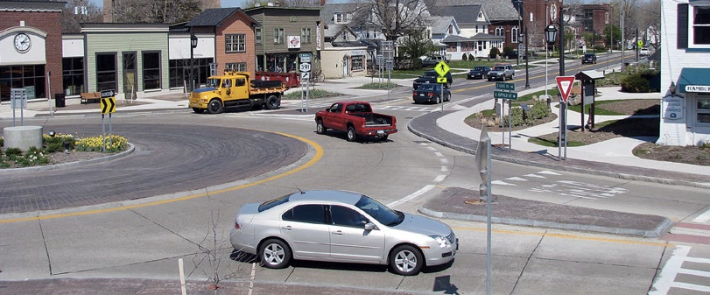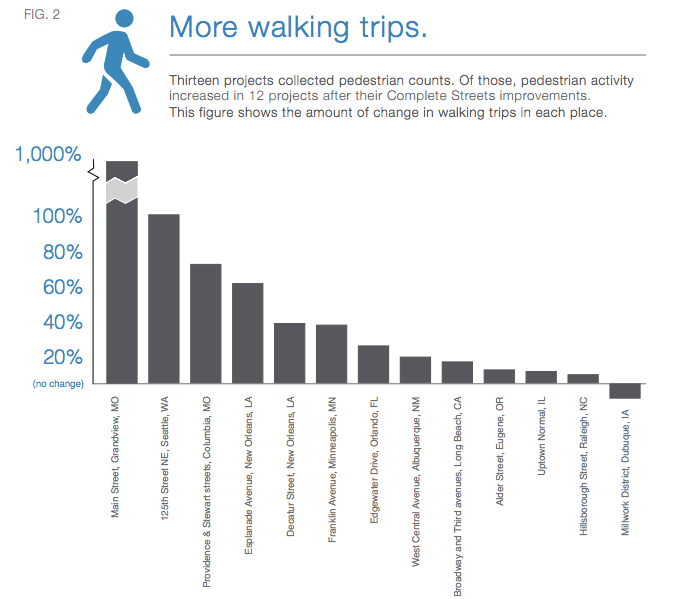
Redesigning streets to make room for people is a no brainer. "Complete streets" projects that calm traffic and provide safe space for walking and biking save money, reduce crashes and injuries, and improve economic outcomes. Need further convincing?
Smart Growth America has done some number crunching, looking at the impact of 37 complete streets projects from communities across the country. Here are the major findings from SGA's new report, Safer Streets, Stronger Economies.
Complete Streets Are a Bargain
The average cost of a road diet -- reducing the number of motor vehicle lanes on a street -- was $2.1 million. In other words, pocket change. Per mile, three quarters of the complete streets projects came in below the cost of a typical arterial street project cited by the FHWA.
Here's an amazing example: Portland, Oregon, spent $95,000 restriping Multnomah Boulevard and adding signs and bollards. That tiny investment reduced speeding by half and increased cycling 44 percent.
They Promote Walking and Biking
Not all of the projects had good data on walking and biking trips, but among those that did the results were clear. Of the 13 projects that tracked walking, 12 saw an increase in foot traffic. Bicycling increased in 22 of the 23 projects with bike counts. Complete streets projects also appear to have a positive impact on transit ridership. Only 7 projects reported transit ridership data, but in six of those cases, there was an increase.
They Prevent Collisions
In 70 percent of the cases examined, traffic collisions fell, and in 56 percent, injuries were reduced.
They Increase Hiring and Private Investment
The data here is a little limited, but Smart Growth America found some evidence that suggests road diets are good for business. In 11 cases, SGA was able to track down employment data from the areas that had conducted road diets. After one year, the number of jobs within one to two blocks of the project increased in seven of those cases.
Only six communities tracked the number of total businesses in the area, but among those who did, all six reported an increase.






